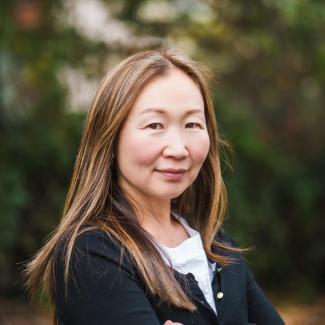
Dear Cultural Survival Community,
It is my great pleasure to present this issue of the Cultural Survival Quarterly on Indigenomics, otherwise known as Indigenous Economics. Our Indigenous communities are powerhouses of knowledge, abundance, resilience, and resources. It is our time to harness that power and shift the narrative of taking, exploitation, and degradation to a narrative and practice of caring, regeneration, and giving back to communities and Mother Earth.
My first understanding of Indigenomics started early on in my life growing up in Nagalyk, a rural community with my grandmother, Ekaterina (her traditional name was Dulma). I think about her often lately, as she was the one, who through our ancestral stories, weaved the foundation of my values and belief systems. My grandmother’s village is located about 60 kilometers from the beautiful Lake Baikal in Siberia, and since time immemorial, our communities lived off the land hunting and gathering, bartering fish and meat, and preserving food for winter seasons.
Even during the Soviet times, more than 95 percent of the food on our tables came from the forest and fields where we cultivated potatoes, carrots, beets and more. I remember when my grandmother had an excess of milk and sour cream, she would share it with other families, while other grandmothers in the villages would share wild strawberries or meat with us. At any given moment, every family had enough of everything and no one went hungry. We lived in a gift economy, where reciprocity and exchange illustrated how we engaged with one another and our surroundings. When my mother’s generation started moving out of our village to pursue education and careers, money started flowing into the community and it changed the dynamics and relationships among families. We witnessed the gift economy being replaced by the money economy. Today, there is a disconnect between these two systems; gifts come from a place of abundance and intention, whereas the concept of scarcity is inherent and embedded in a money economy.
My question to you, reader, is how do we apply the practice of abundance to the current monetary economy that we are forced to live in? Can we adapt or innovate to make this system work for everyone so that no one is left behind? In this issue, we share the stories of Indigenous entrepreneurs and leaders who are making an immense difference in uplifting their communities on their own terms, and according to Indigenous values and principles, from a place of abundance.
At Cultural Survival, we are committed to investing in Indigenous-led solutions and to an equitable redistribution of resources to Indigenous communities. This is reflected in our grantmaking and support to Indigenous grassroots organizations. Our Bazaar program also supports Indigenous arts and visual traditions as viable sources of income. Join us in investing in Indigenous-led solutions and supporting this necessary shift, because respecting, protecting, and fulfilling Indigenous rights protects us all.
In Solidarity and Gratitude,
Galina Angarova (Buryat)
Executive Director
